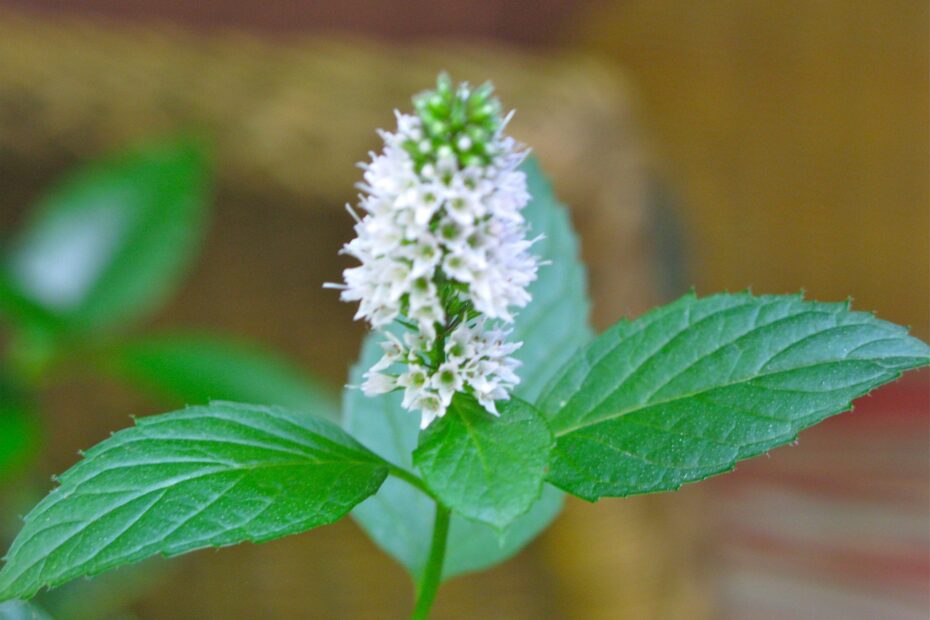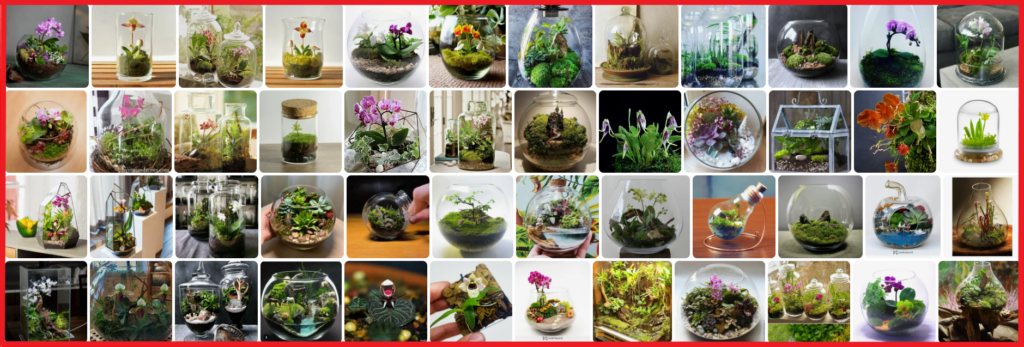
Embellishing nature’s tapestry with delicate hues of green, mint flowers weave a captivating spell of freshness and enchantment. Amidst the luxuriant foliage, these dainty blossoms are often dismissed as mere adornments to be admired but never savored. However, curiosity flourishes like untamed wildflowers, prompting us to question the enigmatic nature of these mint-infused petals: Are mint flowers edible? With cloaked answers waiting to be unraveled, let us embark on a sensory journey to unearth the truth and unlock the tantalizing possibilities that lie within nature’s flourishing treasury.

The Edible Potential of Mint Flowers: Exploring Their Culinary Uses
Mint flowers are often an overlooked ingredient in the culinary world, with most people focusing solely on the leaves for their flavoring. However, these delicate blooms have a surprising array of edible potential that can take your dishes to new heights. From adding a pop of color to providing a subtle minty flavor, mint flowers can be a versatile addition to your culinary repertoire.
One of the key features of mint flowers is their vibrant appearance. Their small, delicate petals come in shades of white, purple, and pink, making them visually appealing as a garnish or in salads. Their fragrance is subtly minty, adding a pleasant aroma to any dish. Additionally, mint flowers can provide a unique flavor that is milder than the leaves but still carries hints of mint. This makes them perfect for infusing oils, making syrups, or creating floral-infused desserts.
When using mint flowers in your cooking, it’s important to note a few tips and considerations. Firstly, ensure that the flowers you use are fresh and pesticide-free. Rinse them gently under cold water and pat them dry to remove any dirt or bugs. Mint flowers are delicate, so handle them with care to preserve their appearance and flavor. Use them sparingly in dishes, as too much can overpower the flavors. Experiment with sprinkling them over salads, incorporating them into cocktails, or even freezing them into ice cubes for a refreshing twist. With their unique qualities, mint flowers offer endless possibilities to enhance your culinary creations. Embrace the edible potential of these often underappreciated blooms and let your creativity blossom in the kitchen.

Unveiling the Flavor Profile and Culinary Applications of Mint Blossoms
Mint flowers may often go unnoticed in cooking, but they are indeed edible and offer a delightful flavor profile that can elevate various culinary creations. These delicate blossoms possess a refreshing and aromatic taste, reminiscent of mint leaves but with subtle floral undertones. Incorporating mint flowers into your dishes can bring a unique and unexpected twist to your cooking repertoire.
Loading... Seconds Left for
Miniature Orchid Terrarium Gallery!

One of the culinary applications of mint flowers is as a garnish. Their vibrant colors and delicate petals make them a visually appealing addition to any dish, instantly enhancing its presentation. Sprinkle a few mint blossoms over salads, desserts, or cocktails to add a pop of color and an extra layer of flavor. Additionally, you can infuse mint flowers into hot or cold beverages, creating refreshing herbal teas or flavoring your homemade lemonades with their distinctive taste.
If you plan on using mint flowers in your culinary endeavors, here are a few features and tips to keep in mind:
| Features |
Tips |
| Delicate and aromatic |
Harvest mint flowers when they are fully bloomed for the best flavor. |
| Vibrant colors |
Avoid using pesticides or chemicals near the mint plants to ensure the flowers are safe to consume. |
| Refreshing flavor with floral undertones |
Store mint flowers in a damp paper towel in the refrigerator to maintain their freshness. |
So, the next time you come across these dainty blossoms, don’t hesitate to embrace their culinary potential. From creating visually stunning dishes to infusing refreshing flavors, mint flowers can take your culinary creations to new heights. Get adventurous and experiment with these edible beauties to add a touch of whimsy and sophistication to your meals.

Mint flowers are not only a beautiful addition to any dish or cocktail, but they are also edible! They boast a delicate flavor that adds a subtle hint of mint to your creations. If you’re wondering how to incorporate mint flowers in your cooking and mixology, here are some handy tips and tricks to get you started:
- Enhance your salads: Sprinkle a handful of fresh mint flowers over your favorite summer salads for an unexpected burst of flavor and vibrant color.
- Infuse in syrups and oils: Steep mint flowers in simple syrup or olive oil to create unique flavor enhancers for cocktails, dressings, or marinades.
- Freeze in ice cubes: Add a touch of elegance to your drinks by freezing mint flowers in ice cubes. They not only look stunning but also impart a refreshing taste as they melt.
- Garnish desserts: Use mint flowers as a decorative and aromatic garnish for desserts like cakes, pastries, or fruit salads.
- Brew a refreshing tea: Infuse fresh mint flowers in hot water to create a soothing and refreshing herbal tea. Add a hint of honey or lemon for an extra flavor boost.
Incor
porating mint flowers into your culinary creations allows you to explore new dimensions of taste and presentation. So why not experiment with these tips and tricks to elevate your cooking and mixology skills?
| Features |
Tips |
| Burst of flavor |
– Sprinkle over salads |
| Infusion potential |
– Steep in syrups and oils |
| Visual appeal |
– Freeze in ice cubes |

Harnessing the Delicate Aroma and Health Benefits of Mint Blossoms
Mint blossoms are not only visually delightful but also packed with a delicate aroma and numerous health benefits. Surprisingly, many people wonder whether these enchanting flowers are edible. The answer is, indeed, mint flowers are edible, and they offer a myriad of culinary possibilities.
When it com
es to utilizing the tantalizing flavors and potential health benefits of mint flowers, the options are abundant. You can add a touch of elegance to your dishes by using the blossoms as a garnish, infuse them to create refreshing teas, or incorporate them into baked goods for a delightful twist. Apart from their culinary applications, mint flowers are known for promoting digestion, soothing indigestion, and even providing relief from headaches. With their vibrant taste and health-enhancing properties, it’s no wonder these delightful blossoms are gaining popularity in kitchens around the world.
To help you make the most of mint blossoms, here are some useful features and tips that will elevate your culinary experience:
| Feature |
Tips |
| Flavor Profile |
Delicate, minty, slightly floral |
| Culinary Uses |
– Use as a garnish for salads, desserts, and cocktails
– Infuse into syrups, oils, or vinegars for added flavor
– Brew into refreshing herbal teas |
| Health Benefits |
– Supports digestion and alleviates indigestion
– Provides relief from headaches and nausea
– Contains antioxidants and antimicrobial properties |
Making the most of mint flowers not only enhances your culinary creations, but it also allows you to experience their remarkable health benefits. So, next time you come across these delicate blossoms, don’t hesitate to harness their enchanting aroma and elevate your dishes to a whole new level.
pan id="Frequently_Asked_Questions">Frequently Asked Questions
Q: Are mint flowers edible?
A: Mint flowers, like a rare delicacy, can indeed be consumed. Branch out from the usual realm of mint leaves and embrace the enchanting aroma and delicate flavors that mint flowers have to offer.
Q: What do mint flowers taste like?
A: When it comes to taste, mint flowers are a graceful dance between sweet and herbal notes, sending your taste buds on a whimsical journey. Delightful hints of mint are playfully intertwined with captivating floral undertones, adding a touch of elegance to any dish.
Q: How can mint flowers be used in culinary creations?
A: Mint flowers provide a delightful twist to both sweet and savory dishes. From sprinkling them over luscious desserts for a visually captivating garnish, to infusing their charming essence into refreshing teas and drinks, these edible blooms are an artistic addition to any culinary masterpiece. Their subtle flavor can accentuate salads, dressings, or even aromatic sauces. Don’t hesitate to let your imagination run wild with these edible jewels from the mint family! As we bid farewell to the world of mint flowers, we hope this article has shed some light on the enigmatic question of their edibility. Through the labyrinthine maze of curiosity, we have explored gardens blooming with spearmint and peppermint flowers, tantalizing our senses with their vibrant colors and enchanting aroma. Like a whispered secret shared amongst nature’s secrets, the journey has brought us to the precipice of understanding.
Caution has
always danced with temptation when it comes to venturing into the realm of edible blooms. With the mint family, the celebrated heroes of infusion and garnish, it is quite the culinary conundrum. Alas, our journey has brought us to a gentle conclusion – although regular mint flowers are not commonly consumed by humans, there are exceptions in certain culinary traditions.
As we part ways, let us cherish the waltz of nature’s botanical beauty, embracing the boundless curiosity that lies within us all. The world never ceases to surprise us, as each leaf, petal, and stem holds an untold story of flavor and nourishment.
From ancient medicinal marvels to modern culinary masterpieces, the mint flower has danced with our palates for centuries. Let us honor this humble herb in all its breathtaking glory, thanking it for its contribution to our teacups, cocktails, and culinary creations.
As we bid a
dieu to the enchanting world of mint flowers, we implore you to venture forth with an open mind and a curious palate. Explore the realm of edible blooms, but always remember to tread carefully, for it is the delicate balance of knowledge and caution that shall guide you towards culinary euphoria.
So, dear reader, as we close the chapter on this captivating exploration, may you find yourself inspired to savor the flavors of life’s peculiar offerings. From farm to fork, from garden to plate, may your culinary adventures be as rich and vibrant as the blooming meadows themselves. Until we meet again, may the taste of mint forever linger on your tongue, reminding you of the delicate wonders that adorn our world.
_posts">Recent Posts
Hello! I'm Jessica Owen, an avid gardener and proud contributor to Up-Gardening.com. Gardening is my passion, and I'm delighted to share my green-thumb experiences with you. From planting tips to nurturing blooms, I'm here to help you cultivate your own slice of paradise. Let's grow together in the garden!
Latest posts by Jessica Owen
(see all)





